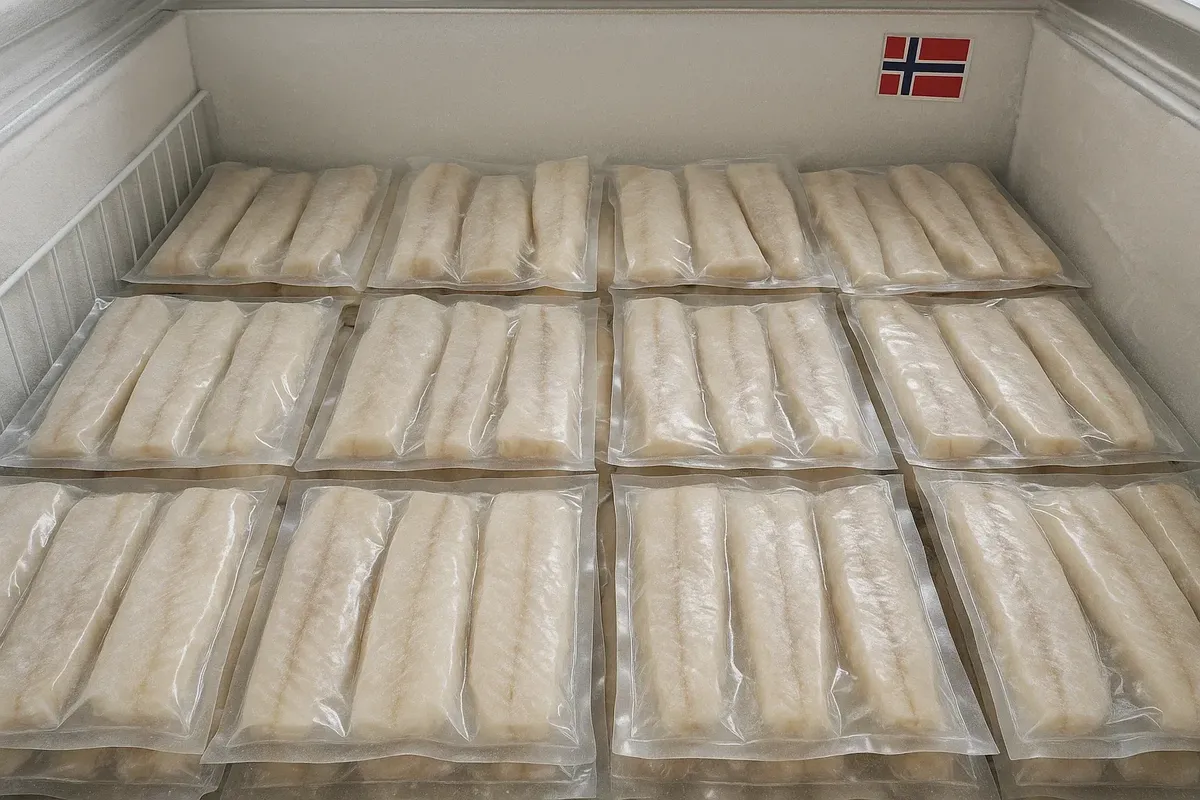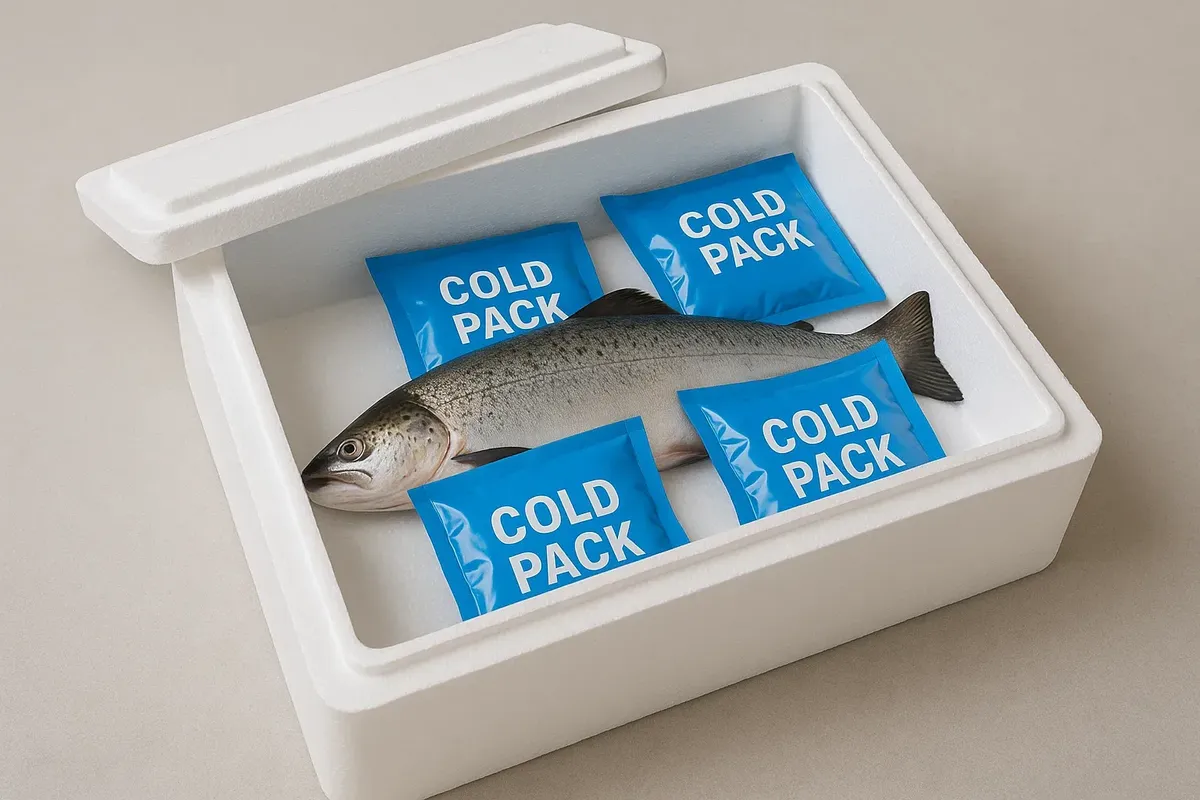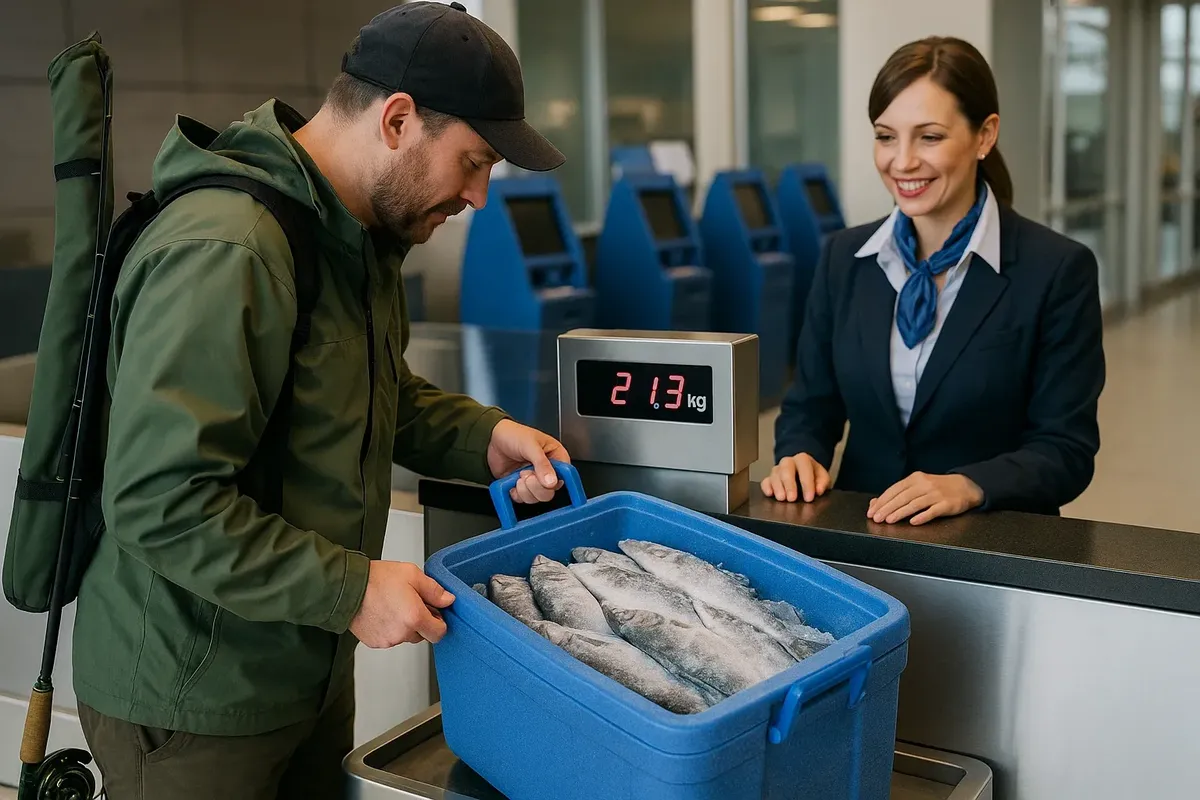🐟 From the fjord to your suitcase: rules for storing, freezing and transporting your catch from Norway
Fishing in Norway is great fun, but it's also important to store and transport your catch properly. Here's everything you need to know about storing, packing and transporting fish to make sure your trip is a success.

📦 How much fish can you catch in Norway?
- Here are some basic customs rules:
- The maximum weight for fish (or fillets) is 18 kg per person.
- You can also take out one large trophy specimen per person, which is not included in the 18 kg limit.
- The fish must be caught by the tourist (you can't buy them in shops).
Important:
When you leave the country, customs officials strictly enforce these restrictions. If you don't follow the rules, you will have to pay a fine and the fish will be taken away.
🐠 What do you need to do to get your catch ready to be transported?
Here's what you need to do after you've gone fishing:
Cleaning the fish:
Take out the insides of the fish, rinse it with cold fresh water, and get rid of any extra moisture.
Filling (optional):
Cut the fish into fillets to make it lighter and smaller. Bases usually have special cutting tables and sharp knives.
Vacuum packaging:
Pack the fillets or whole fish in vacuum bags. This keeps it fresh for longer, keeps it compact and stops it from smelling.
Freezing:
Freeze the fish as soon as you have packed it. The fish will quickly freeze to the desired temperature in the freezers at the bases/
🧊 Storing and freezing fish at the base:
Most fishing bases in Norway offer a full range of services for processing and storing your catch:
- Tables for cutting: for easy cleaning and cutting.
- Vacuum packers: available for free or for a small extra charge (around £10–30 per packer per group).
- Freezers: free at most bases, some offer extra freezers for rent for larger volumes.
Tip:
When booking, check in advance if your base has a vacuum sealer and freezer.

❄️ Here's how to transport frozen fish the right way.
| Container Type | Advantages | Price |
|---|---|---|
| Polystyrene box | Light, cheap, reliable for transporting frozen fish | €10–20 |
| Thermal bag with ice packs | Convenient, reusable, suitable for small amounts of fish | €20–50 |
| Professional plastic thermal box | Maximum durability, best insulation, reusable | from €50 |
Recommendation:
When transporting things by air, it is best to use rigid foam containers with lids that are sealed with strong adhesive tape.

🛄 Arrive at the airport and get on a plane.
- You can only transport fish and seafood in the checked luggage section of your suitcase; they cannot be taken into the cabin with you.
- Make sure you pack the fish carefully so that there is no leakage and the fish doesn't start to stink.
- Always check the airline's rules first — some may charge extra for carrying thermal containers or more baggage.
- The customs officials may ask you to open the container to check how heavy it is and what's inside it.
Tip:
Mark the container or bag clearly with 'FROZEN FISH' so that airport staff will handle your luggage with care.
- 📋 Here are the documents you need to send your catch abroad:
- You don't need any special documents to export fish, but you must follow the weight restrictions and keep receipts for the accommodation at the base to prove that you legally caught the fish.
- It is a good idea to have proof that the fish was caught by you (e.g. photos from the fishing trip).
📝 Things to remember for a successful catch:
- First, clean and cut the fish into fillets at the base.
- Use vacuum packaging and freeze the fish first.
- You will need to buy or rent a suitable thermal container in advance.
- Weigh the fish, and make sure it's no more than 18 kg (+1 trophy).
- Go to the airline's website and check their rules on bringing fish on the plane.
- Prepare the receipts and photos that prove you caught the fish.
🔑 5 easy ways to keep your catch fresh and safe:
Try to keep the time between putting it in the freezer and putting it on the plane as short as possible:
The fish will be better if it has not been out of the freezer for too long.
Use ice packs:
They will help keep the fish frozen, even if your flight is delayed.
Don't pack the container too tightly:
Make sure you leave some space for better insulation and to avoid damaging the packaging.
Check the weather forecast:
In summer, add more ice packs in hot weather.
Put an extra layer of wrapping paper or towels at the bottom of the container.
This will stop water from leaking and help keep everything clean.
If you know the basic rules, it's easy to store and transport your catch from Norway properly. If you follow the steps of cleaning, packaging and customs, your catch will arrive home in perfect condition and you'll have great memories of your trip!





2 comments
Log in to leave a comment
Har du noen gang tatt med fisk hjem fra en reise før? 😊